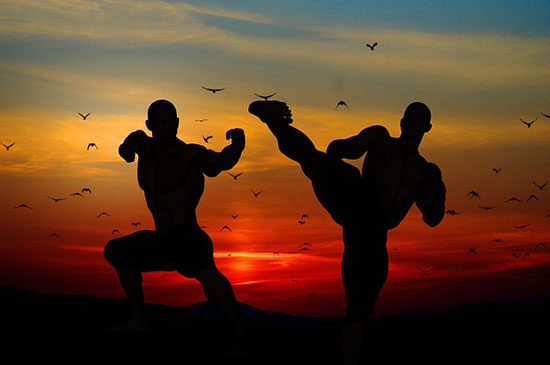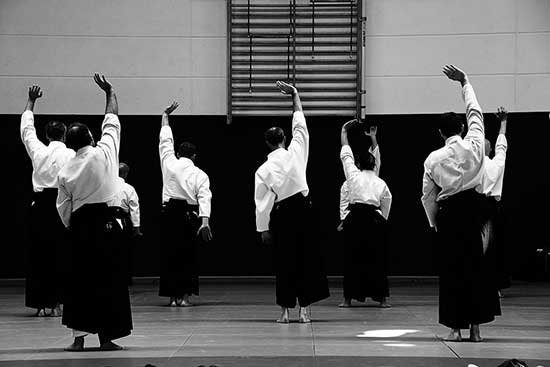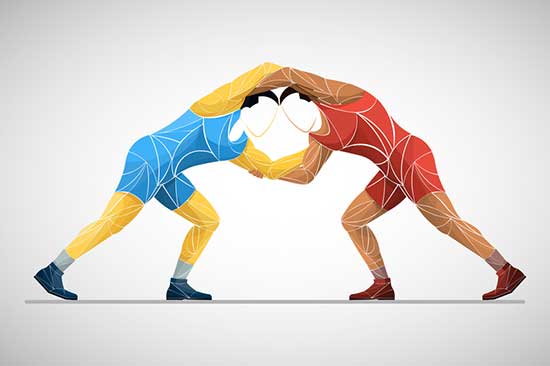Hapkido is a Korean material that uses elements such as judo and taekwondo, among other material arts.
It is derived from three Korean words Hap, ‘harmony’ ki, ‘power,’ and do, ‘way or path’. It encourages the application of circular movement, joint locks, and throws to defend against an attacker having many material combat skills.
Hapkido functions to neutralize an attack by checking an attacker’s momentum and balance against them. In addition, it uses techniques such as throwing, striking, and pressure point attacks.
Kyokushin is a Japanese Karate style that originated in the 1950s. Unlike Hapkido, it emphasizes physical conditioning and full-contact sparring.
Kyokushin trainees are trained to exercise powerful strikes using kicks, knee strikes, and punches. The main aim is to come up with a strong body and mind. Additionally, it plays a trick in defending oneself during real-life issues.
Contents
Benefits of Hapkido
Hapkido offers comprehensive benefits for both the mental and physical life of practitioners. The benefits include:
- First, it promotes excellent physical fitness. Many body movements are involved during the exercise, thus offering flexibility, strength, and improved cardiovascular endurance.
- It improves the confidence level. Hapkido practitioners who have undergone self-defense training are physically fit and have the confidence to protect themselves and others.
- It is a source of cultural education. Since it is Korean art, training in it would enable an understanding of Korean culture, which the current generation has long given little attention to culture.
- Hapkido increases self-defense skills. It provides training on defending oneself against attacks such as punches and kicks. Therefore, Hapkido has enormous benefits and, thus, should be implemented for better improvement of society.
Disadvantages of Hapkido
Despite the numerous advantages, Hapkido is associated with challenges.
- Injuries are a risk in Hapkido training. Like any other physical activity, Hapkido has injuries such as bruises, bone breaking, and strains. A practitioner needs to follow the correct training procedures to avoid injuries or get medical assistance in case of severe injuries.
- Another disadvantage is it is expensive. Hapkido comes with membership fee subscriptions and costly equipment to access the training facility; thus, it can be affordable to a few.
- The unavailability of Hapkido training facilities in geographical areas. Due to the expensive nature of the Hapkido training, only some are available in specific geographic locations, making it difficult for practitioners to access the facility.
Kyokushin advantages
- Enhanced self-defense skills; Hapkido practitioners get the skills to protect themselves and others; thus, accessible defenses are there in case of real-life occurrences.
- Kyokushin improves physical fitness. Regular training improves cardiovascular endurance, strength, and flexibility.
- Stress relief. The focus and physical activities required in Kyokushin training make practitioners more relaxed and centered.
- It increases confidence. With the skills trained, the practitioners can confidently attack in real-life situations.
Disadvantages of Kyokushin
Although Kyokushin training could bring many benefits to an individual, here are potential disadvantages to consider before commencing training.
- The risk of injury. Like any other training activity, the chances of injuries in Kyokushin are significantly higher due to the full contact sparring.
- Kyokushin is time-demanding. The training is physically and mentally demanding and hence requires more time commitment which is difficult for many people.
- Another disadvantage is limited access to training areas. Kyokushin studios may not be available in all areas, thus, causing inconveniences to people where it is not located as they will need traveling costs.
Differences between Kyokushin and Hapkido
There are several differences between Hapkido and Kyokushin. First, the style and origin differ. Hapkido is a Korean material art, while Kyokushin is a Japanese Karate style.
Kyokushin is associated with full constant sparring. In contrast, Hapkido uses various techniques such as strikes, joint locks, and throws.
While Hapkido is encouraged to use circular movement and leverage against the attacker, the Kyokushin are taught to use powerful strikes using knee strikes, punches, and kicks.
Kyokushin aims to develop a strong body, mind, and skills for defending oneself in real-life situations.
On the other hand, Hapkido emphasizes neutralizing an attack through the attacker’s momentum and balance against them.
Similarities between Kyokushin and Hapkido
Kyokushin and Hapkido are both material arts that focus on physical and self-defense. Kyokushin training aims to offer one skill and mindset necessary for defending oneself.
Hapkido trains practitioners to neutralize and attack using the attacker’s momentum.
Both Kyokushin and Hapkido emphasize respect and discipline. Hapkido practitioners should respect their instructors and fellow students.
Also, Kyokushin practitioners are expected to show respect while on and after training.
Take Away
Hapkido and Kyokushin are different material arts with different origins, philosophies, training methods, and histories.
Hapkido is a Korean art that uses circular movements, joints, and throws to defend against an attacker, in addition to techniques for striking, pressure joint attacks, and throwing.
Kyokushin is a Japanese type of Karate that originated in Japan and emphasized full-contact sparring and physical attacks.
Although both arts are associated with disadvantages, the challenges related to Kyokushin are more harmful if the practitioners do not give training instructions attention.





